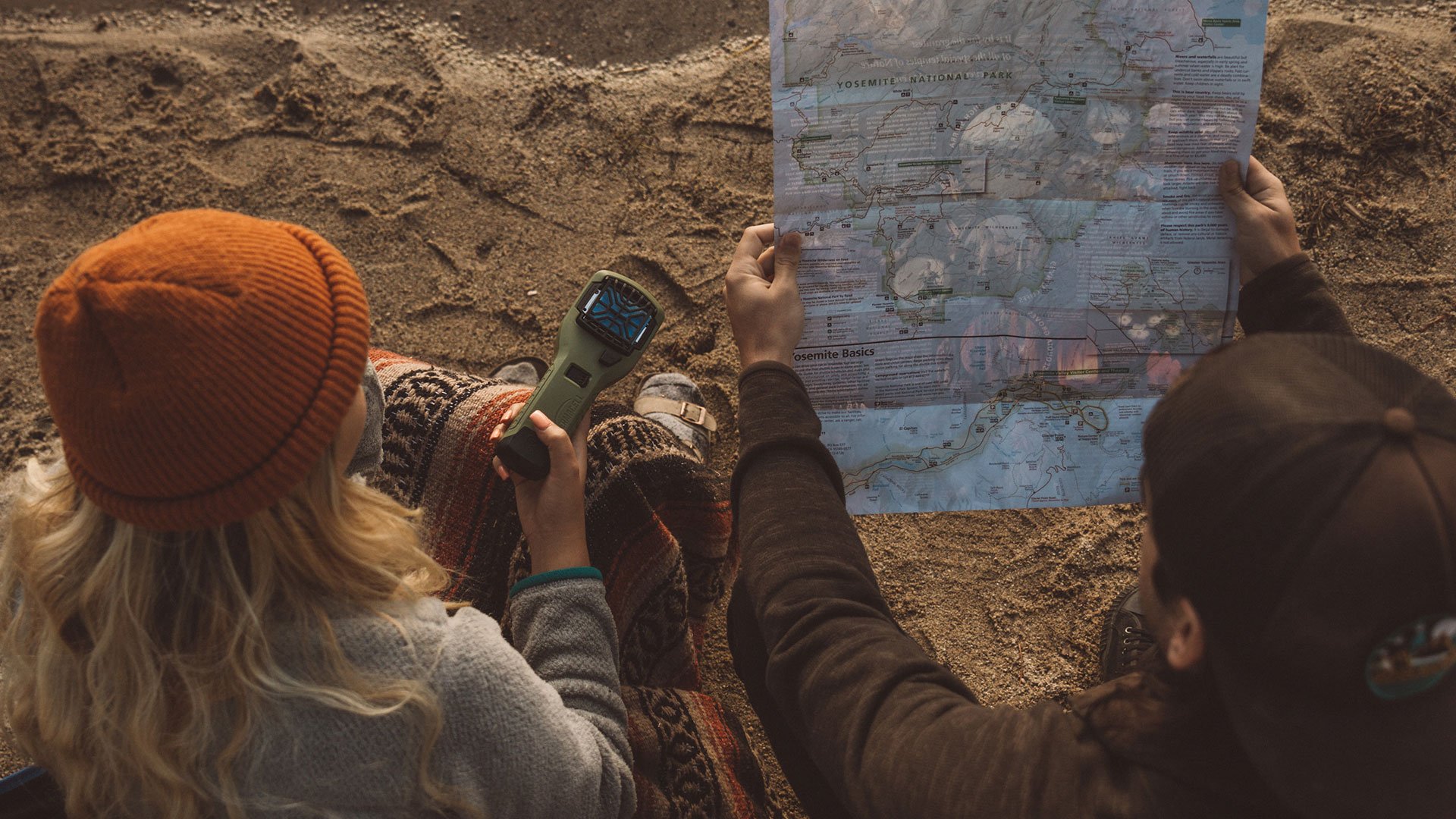 What Is World Mosquito Day?
What Is World Mosquito Day?
World Mosquito Day happens each year on August 20th. This event was started to raise awareness of the dangers of disease-transmitting mosquitoes, and it occurred on the anniversary of 8/20/1897 when it was first discovered that mosquitoes are a vector that carries and transmits Malaria between humans.
Efforts to raise awareness around the importance of mosquito control and the dangers of disease-transmitting mosquito species are imperative to combat the high prevalence of Malaria cases annually (241 million estimated cases across the globe in 2020).
While many think that August marks the end of summer and, therefore, the end of mosquito season, now is the time to gear up for protecting yourself in the fall. In this blog, Dr. Ben McMillan, Sr. Biologist at Thermacell, will explain why!
Isn’t Mosquito Season Over? Why Should I Plan for Mosquito Defense in The Fall?
While many think that mosquito season is confined to summer months or periods of very hot weather for regions that don’t experience the four seasons, with our evolving seasonality, ideal temperatures for mosquitoes are often prolonged well into the fall season or months of historically cool and moist weather conditions.
These “ideal conditions” for mosquitos include consistently warm temperatures ranging from 60° F (15.5° C) - 80° F (26.6° C) and moderate-to-high humidity levels. The optimal temperature for mosquito activity is generally in the 70° F (21° C) range. When conditions are too hot and dry or too cold and wet (think freezing bodies of water), the mosquito index will begin to decrease.
Mosquito populations are indeed largest in the summer months when populations have been building throughout the season and warm weather is more consistent, but during periods of high heat and humidity, human behavior is largely shifted from outdoor activity to taking shelter indoors – where mosquitoes are (hopefully!) not present. Your level of outdoor activity is a key factor in determining your risk for mosquito bites. In the fall months, as warmer temperatures are prolonged in some regions or as cooler, more comfortable temperatures emerge in other regions, people tend to increase their outdoor activities like fall hiking, apple picking, or picnics.

Mosquitoes are not so different from humans in their preference for warm weather, although they may like it a bit more humid than most people would prefer! Like many organisms living within an ecosystem, mosquitoes adapt their behavior to match their prey, and some species strongly prefer humans.
For example, Anopheles gambia, a species of mosquito in Africa that is a main vector of malaria, has adapted feeding behavior to align with times when humans are most susceptible to bites and the easiest targets for feeding – at night while asleep. As Africans have increased their use of mosquito defense indoors, such as treated mosquito nets, recent data indicates that mosquitoes have continued to evolve their behavior to feeding in evening periods outdoors before people go to bed indoors where these sprayed nets are raised.
“Perhaps the best-documented behavioral change in malaria vectors, and the biggest concern, is the development of an early, outdoor feeding phenotype among anopheline populations in areas of extensive indoor insecticide use.” (Gatton, 2013)
Whether the mosquito index is light, moderate, or severe in your area – if you are outdoors and mosquitoes are present, they will find you!
As they adapt to their environment, are mosquito patterns changing over time?
Yes, it is reasonable that we will begin to see cascading impacts on mosquito patterns as climate expectations and seasonality change. In the last 20+ years, summers have become hotter and drier, with 9 of the 10 hottest recorded years in the U.S. occurring in this period, according to the EPA. Temperatures in Canada have also steadily increased since the 70s, as seen in the upward trend depicted in the average annual temperature chart from the Government of Canada below.
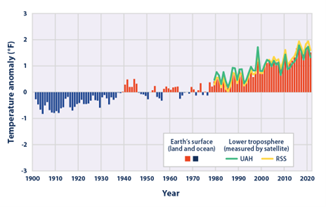
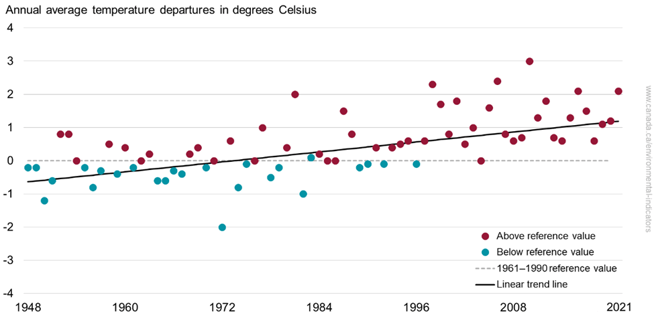 Annual average temperature departures from the 1961 to 1990 reference value, Canada, 1948 to 2021
Annual average temperature departures from the 1961 to 1990 reference value, Canada, 1948 to 2021
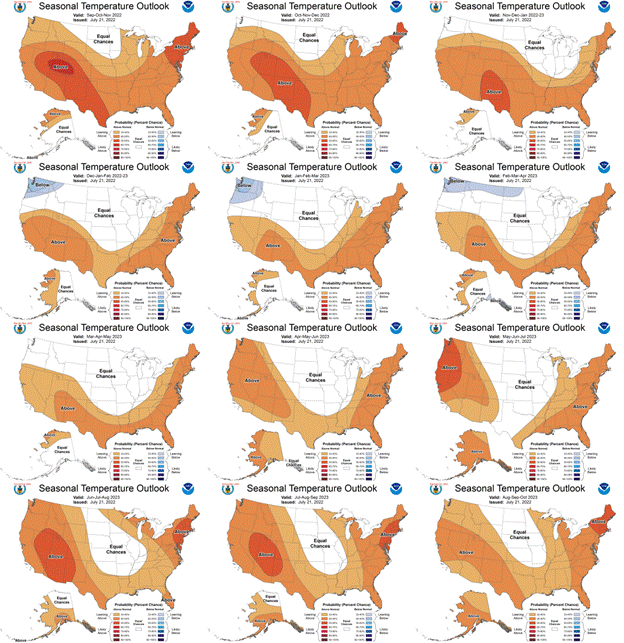
Weather patterns are changing worldwide as shown in the 2022-2023 Seasonal Temperature Outlook from the U.S. NOAA and the Trends in seasonal temperature across Canada chart from NRCAN above. This impacts both the fall and winter as the warmer temperatures that are characteristic of summer weather are prolonged into fall, which then prolongs the fall season, contributing to a milder winter. As we know, changes in weather patterns like this can have an impact on the ecosystems built to rely on them.
Different mosquito species have varying tolerance for cold weather. Some species, like the Asian Tiger Mosquito (Aedes albopictus), are typically found in the Southeastern to Northeastern U.S. and are better suited to handle winter temperatures than other Southeastern U.S. species like the Yellow Fever Mosquito (Aedes aegypti).
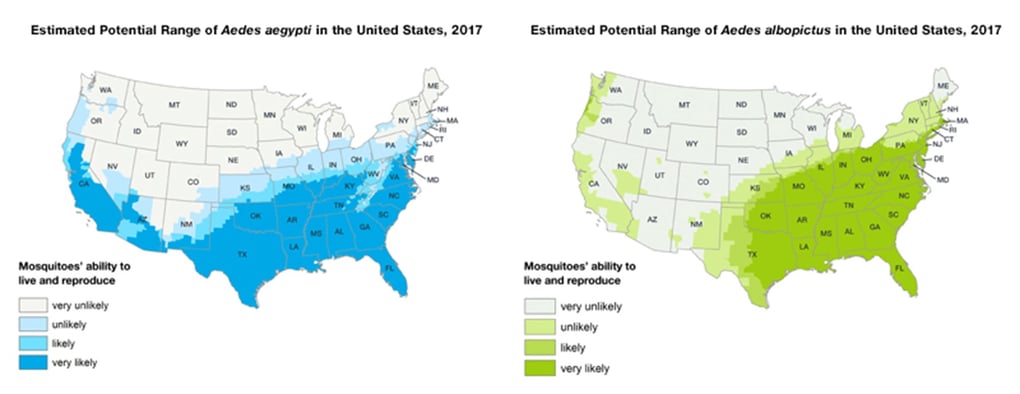
While both species prefer warmer, more tropical weather conditions, the Asian Tiger Mosquito can survive overwintering in more northeastern U.S. geographies, as shown in the chart above. Each year, the geographic range of mosquito species expands and contracts as temperatures change throughout the seasons. For example, during warm weather months when temperatures are rising, the Yellow Fever Mosquito will travel further north up the coast of the U.S. where higher temperatures are present. As cold temperatures in those regions set in for the winter season, the Yellow Fever Mosquitoes die off, and their region of influence shrinks back to the areas where freezing temperatures are less common/severe. This knockback effect is lessened each year. Yellow Fever Mosquitoes experience more northern creep incrementally in their geographic range as temperatures rise and warm weather patterns are prolonged throughout the year. It is reasonable to assume that similar effects will be present globally as seasonality and climate expectations continue to change.

How can I take advantage of World Mosquito Day to prepare for this fall?
We know our customers are some of the savviest shoppers out there – people want to know what mosquito control solutions should be implemented in their lives and why. Thermacell constantly works to keep consumers informed and prepared with the most advanced mosquito repellent technology available.
The first step in mosquito defense is education! Learn about the mosquitoes in your area and take advantage of Thermacell product deals going on this World Mosquito Day.
Resources
Canada, Environment and Climate Change. “Government of Canada.” Canada.ca, / Gouvernement Du Canada, 28 July 2022, https://www.canada.ca/en/environment-climate-change/services/environmental-indicators/temperature-change.html.
“Climate Change Indicators: U.S. and Global Temperature.” EPA, Environmental Protection Agency, July 2022, https://www.epa.gov/climate-indicators/climate-change-indicators-us-and-global-temperature.
“Fact Sheet about Malaria.” World Health Organization, World Health Organization, 26 July 2022, https://www.who.int/news-room/fact-sheets/detail/malaria.
Gatton, Michelle L et al. “The importance of mosquito behavioural adaptations to malaria control in Africa.” Evolution; international journal of organic evolution vol. 67,4 (2013): 1218-30. doi:10.1111/evo.12063
“Potential Range of Aedes Aegypti and Aedes Albopictus in the United States, 2017.” Centers for Disease Control and Prevention, Centers for Disease Control and Prevention, 11 Mar. 2020, https://www.cdc.gov/mosquitoes/mosquito-control/professionals/range.html.
“Seasonal Temperature Outlook.” Climate Prediction Center - September-October-November Climate Normals, National Oceanic and Atmospheric Administration, 21 July 2022, https://www.cpc.ncep.noaa.gov/products/predictions/long_range/climates/son.html.
“World Mosquito Day 2021.” National Institute of Allergy and Infectious Diseases, U.S. Department of Health and Human Services, 20 Aug. 2021, https://www.niaid.nih.gov/news-events/world-mosquito-day-2021.
Zhang, X., Flato, G., Kirchmeier-Young, M., Vincent, L., Wan, H., Wang, X., Rong, R., Fyfe, J., Li, G., Kharin, V.V. (2019): Changes in Temperature and Precipitation Across Canada; Chapter 4 in Bush, E. and Lemmen, D.S. (Eds.) Canada’s Changing Climate Report. Government of Canada, Ottawa, Ontario, pp 112-193.